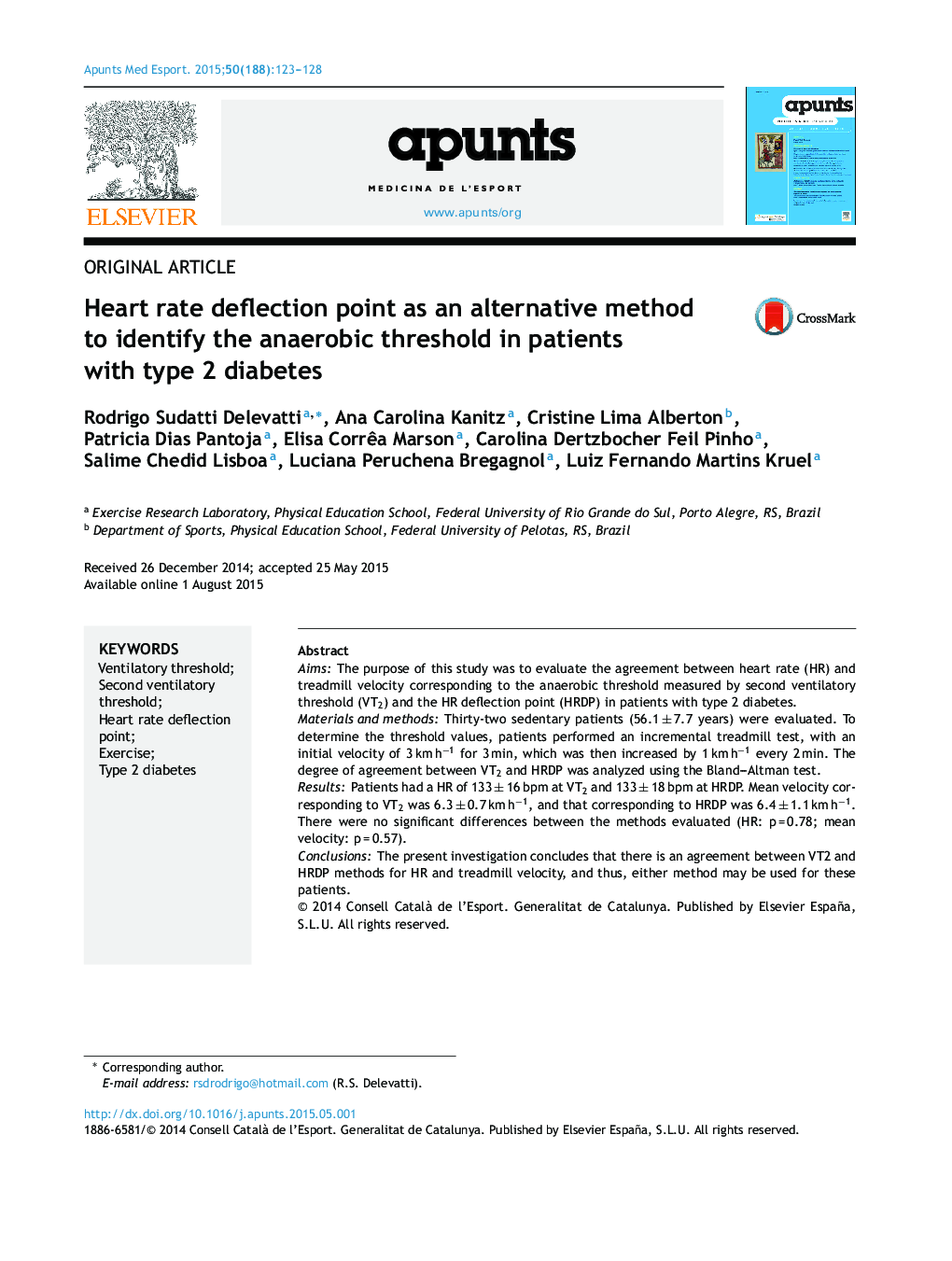| Article ID | Journal | Published Year | Pages | File Type |
|---|---|---|---|---|
| 2738550 | Apunts. Medicina de l'Esport | 2015 | 6 Pages |
AimsThe purpose of this study was to evaluate the agreement between heart rate (HR) and treadmill velocity corresponding to the anaerobic threshold measured by second ventilatory threshold (VT2) and the HR deflection point (HRDP) in patients with type 2 diabetes.Materials and methodsThirty-two sedentary patients (56.1 ± 7.7 years) were evaluated. To determine the threshold values, patients performed an incremental treadmill test, with an initial velocity of 3 km h−1 for 3 min, which was then increased by 1 km h−1 every 2 min. The degree of agreement between VT2 and HRDP was analyzed using the Bland–Altman test.ResultsPatients had a HR of 133 ± 16 bpm at VT2 and 133 ± 18 bpm at HRDP. Mean velocity corresponding to VT2 was 6.3 ± 0.7 km h−1, and that corresponding to HRDP was 6.4 ± 1.1 km h−1. There were no significant differences between the methods evaluated (HR: p = 0.78; mean velocity: p = 0.57).ConclusionsThe present investigation concludes that there is an agreement between VT2 and HRDP methods for HR and treadmill velocity, and thus, either method may be used for these patients.
ResumenObjetivosEl propósito de este artículo fue evaluar la concordancia entre frecuencia cardíaca (FC) y velocidad en la cinta de correr correspondiente al umbral anaeróbico medido por el segundo umbral ventilatorio (VT2) y por el punto de deflexión de la FC (PDFC) en pacientes con diabetes tipo 2.MétodosSe evaluaron treinta y dos pacientes sedentarios (56,1 ± 7,7 años) para determinar los valores de los umbrales, los pacientes realizaron una prueba de esfuerzo incremental a una velocidad inicial de 3 km h−1 durante 3 min, con incrementos de 1 km h−1 cada 2 min. Se analizó el grado de concordancia entre VT2 y PDFC mediante el test de Bland–Altman.ResultadosLos pacientes mostraron una FC de 133 ± 16 lpm en VT2 y 133 ± 18 lpm en PDFC.La velocidad media correspondiente a VT2 fue 6,3 ± 0,7 km h−1 y la correspondiente a PDFC fue 6,4 ± 1,1 km h−1. No hubo diferencias significativas entre los métodos evaluados (FC: p = 0,78; velocidad media: p = 0,57).ConclusiónEsta investigación concluye que existe correspondencia entre los métodos VT2 y PDFC en FC y la velocidad media en la cinta de correr, por lo tanto, cualquiera de estos dos métodos puede ser usado en estos pacientes.
